< Previous
The Medallic History of Lord Byron.
By Frank E. Burton.
THE custom of striking Medals to commemorate great deeds or in honour of remarkable persons dates back to the time of the Greeks and Romans, but most of the so-called medals issued were really coins or money of exchange. Both the Greeks and the Romans often alluded to historical events in their coinage, but these were not medals in the modern sense as we understand them.
The Romans did strike a number of medals commemorative of events and persons, and these are known as Roman Medallions.
In the 15th and 16th centuries it was the fashion and custom in many countries for the rich nobles to collect these medals and coins, especially in Italy, but in most cases again they consisted to a very large extent of coins. When Joseph Addison visited Italy these Cabinets of Medals were shewn to him, and he must have been interested and impressed as the following lines written by him amply demonstrate:— "The medal, faithful to its charge of fame, Through climes and ages bears each form and name, In one short view, subjected to our eye, Gods, Emperors, Heroes, Sages, Beauties lie."
In the 15th century we probably find the most wonderful medals struck for generations, and to-day they are of great value, and most highly appreciated. It is to Vittoria Pisano of Verona, a great painter and
and sculptor of the first half of the 15th century, that we chiefly owe these artistic and realistic medals. His medals were not struck from dies as formerly, but were first modelled in wax, and then cast from moulds, and were real portraits of the kings, princes, and the leading nobility of the time, and they were kept more as portraits than as commemorative medals. Of these medals only about thirty are now in existence. Pisano was followed by other great medallists until the end of the 16th century, when we see the wave of artistic medal production declining.
The Commemorative Medals of Lord Byron in my possession as illustrated, may be considered really good work of the period.
1. Memorial 1824.
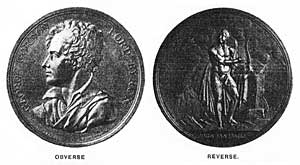
BYRON MEDAL, NO. 1
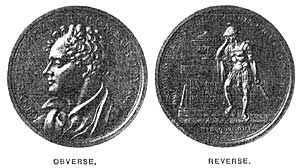
BYRON MEDAL, NO. 2
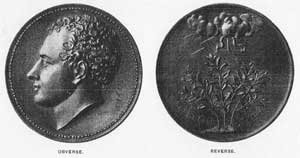
BYRON MEDAL, NO. 3
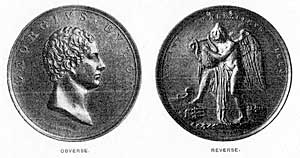
BYRON MEDAL, NO. 4
Obverse—Bust of Byron three-quarters to left, wearing cloak and shirt with deep collar. Leg. George Gordon Lord Byron. Mudie D. Faulkner F.
Reverse—Byron as Apollo standing facing, holding lyre, which he rests on rock; in the background mountains, clouds, and lightning ; in the exergue, Born January 22nd, 1788; in the field, Mudie D. Faulkner F. This medal was struck after Byron's death, though it mentions only the date of his birth.
2. Memorial 1824 (in silver and bronze)
Obverse—Bust of Byron three-quarters to left, wearing coat and shirt with deep collar; on truncation, Halliday F. Leg. George Gordon Byron, Lord Byron.
Reverse—Soldier in mournful attitude, resting his elbow on tomb, the base of which is inscribed :—" Byron Nat. Jan. 22. 1788. Mort. Apr. 19. 1824." At the side of the monument a burning torch reversed. Leg. Nomen Fasti Miscet Suis Graecia Memor. In the exergue, Missolonghi.
3.
Obverse—Head of Byron to left, in high relief; behind,
![]()
Reverse—Bay -tree uninjured by lightning.

(Dedication of F. Pickering and F. Forthington, made by A. J. Stothard, 1824).
4.
Obverse—Head of Byron to right, bare. Georgius Byron ; below, Galdazzi.
Reverse—Winged figure with foot on prow of boat.
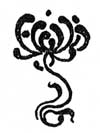
< Previous
